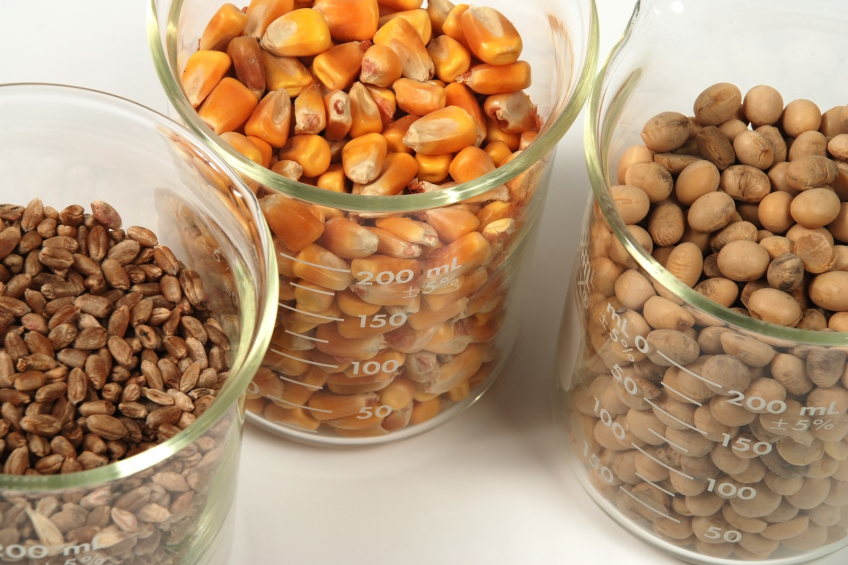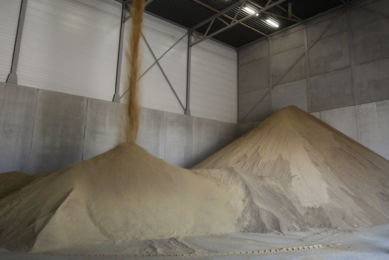Plant phytates do not affect added zinc in pig feed

It is well known that phytates are an obstruction for phosphorus uptake by pigs. For long, the same has been thought for all types of zinc. Recent studies, however, indicate that plant phytates do not affect zinc that has been provided as feed supplement.
By Agathe Romeo, R&D, Animine, France
Zinc (Zn) is an essential nutrient that is involved in the growth and immune function of monogastric animals. The mineral is involved in many metabolic functions, including protein synthesis, activity of some enzymes and regulation of immune cell development. In case of deficiency, in monogastrics a degradation of growth performance and a reduction of the immune defense system are observed. Pigs tend to lose their appetite and if deficiency is severe, a skin disease called parakeratosis appears.
Making sure that pigs receive correct amounts of zinc, however, is easier said than done. First, zinc content in plant diets (also known as ‘native zinc’) is generally insufficient to fulfil the requirements of animals. Therefore, the use of other zinc sources, like zinc sulfate or zinc oxide, is necessary.
This supplementation comes with restrictions too. Often, for its growth promoting effect, zinc is supplemented in excess – despite its negative impact on the environment. In addition, anti-nutritional factors can be a complicating factor, phytate being the most notorious of them.
In humans, phytate-related zinc deficiency has long been reported all over the world. The effect of phytates on zinc bioavailability in monogastrics has also been reviewed in numerous studies.
Effects of phytates on minerals
Phytate is one of the most famous antinutritional factors in plant-based diets. Identified in 1855 by the German forestry biologist Theodor Hartig, it is known for its negative effects on growth performance and health status of monogastric animals.
Phytate is widely present in plant-based diets. It is accumulated in seeds during the ripening period and represents the main storage form of phosphorus (P) in plants and in seeds, especially in high-fibre foods like wheat bran, legumes and whole grains. Phosphorus stored inside phytate usually takes up between 55% and 75% of the total phosphorus content in these raw materials. About 2 to 2.5 g of phytate-phosphorus per kg of feed are generally found in a plant-based diet for monogastrics.
A high density of phytate is known to negatively affect mineral absorption in the pigs’ intestinal tract. The negatively charged phosphate groups in phytate usually bind to minerals in very stable complexes, making these minerals unavailable for animals. In short, when phytate content in a diet increases, absorption of some minerals like iron and zinc decreases.
Phytases
Phytases – enzymes degrading phytate – play an important role in enhancing the intestinal absorption of native zinc. Microbial phytases hydrolyse phytate and liberate the native zinc that was bound to these compounds. Positive effects of supplying these enzymes have been confirmed by several studies involving poultry or swine.
It is also possible to increase the activity of phytases naturally occurring in plants using food processing techniques. For example, as phytate is water-soluble, soaking leads to the removal of a significant amount of phytates and improves plant phytase activity. On the contrary, cooking degrades phytase, but not phytate which is very stable; then it is necessary to use plants with heat-stable phytases or to add exogenous heat-stable phytases.
Another possibility is to choose raw plant material that is selected on a low phytate-phosphorus content. These plants contain the same native zinc concentration as normal species – i.e. not all of the zinc is bound to phytates.
In general, studies used to show that all these methods have a positive effect on zinc concentration in pig bones – when compared to classical diets. When supplementing a source of zinc to the feed, however, different rules apply.
Different types of phytate
Just as a difference can be made between native and supplemented zinc, similarly there is not just one kind of phytate. Apart from phytate occurring naturally in plants, synthetic phytates exist, like calcium phytate and sodium phytate. As may be expected, each type of phytate has its own set of properties. This is relevant to know, as in bioavailability studies, often sodium phytates and not plant phytates are used. Outcomes of these studies may therefore not always be representative. Sodium phytate is known to bind easily to supplemented zinc, as it is ionisable under a large pH range. In practice, this means that sodium phytate binds to zinc in a stronger way than vegetable phytate would.
In fact, this use has blurred the view on the bioavailability of supplemented zinc as recent studies show a different picture.
Figure 1 is a compilation of data obtained from different studies on the effect of phytase supplementation on bone zinc content. In these studies, carried out by scientific teams led by Pierre-Stéphane Revy in 2004 and 2006 as well as by Patrick Schlegel and others in 2010, trials are shown of tests with and without phytase. The graph therefore shows the liberation of native zinc, that used to be bound to phytates in plant diets. In short, irrespective of the addition of phytase, a ‘basis’ level of zinc always seems to be available to pigs – this is mostly the effect of supplemented zinc.
To sum up, plant phytates interact only with native zinc. Bioavailability of zinc from supplemented sources seems independent of dietary phytate content (Figure 2).











